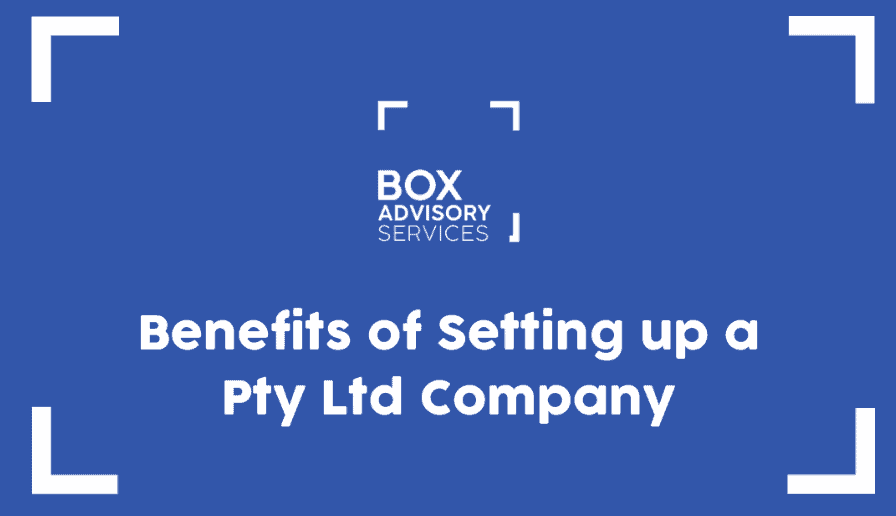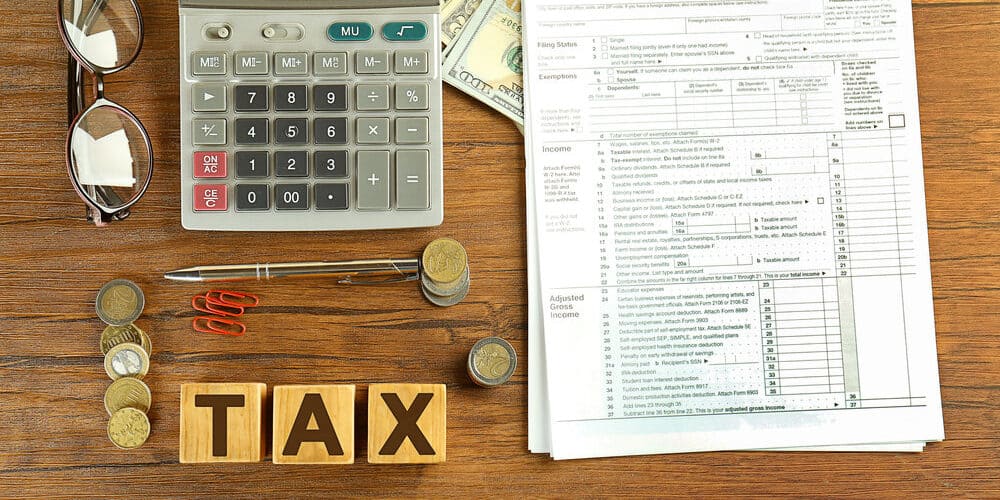BY
|
Temporary Full Expensing: What It Was and What It Is Now
If you’re a small business owner in Australia, there’s a fair chance you’ve benefited from temporary full expensing over the past few years, or at least heard about it. The Australian Government implemented temporary full expensing as part of its economic stimulus measures.
It was one of the most generous tax incentives ever introduced for businesses. But now it’s gone, and with tax season looming, many are wondering how this affects their next return and whether there’s anything they should be doing differently.
The short answer is yes. This measure, which allowed businesses to instantly deduct the full cost of eligible assets, officially ended on 30 June 2023.
That shift has real consequences for businesses that rely on asset purchases to support growth or operations.
If you’re still working on your 2023-24 return or thinking ahead to this year’s tax planning, it helps to understand what changed and what options still exist.
What Temporary Full Expensing Was and How It Worked
Temporary full expensing (TFE) allowed eligible businesses to claim an immediate tax deduction for the full cost of new or eligible depreciable assets. This included things like tools, vehicles, machinery, office equipment and more.
Temporary full expensing is applied to a wide range of eligible depreciating assets.
The idea was pretty simple: rather than spreading the deduction across several years through depreciation, you claimed the full amount in the same year you bought and used the asset. It was designed to encourage business investment during uncertain times, giving owners a strong reason to bring forward purchases they may have delayed.
Businesses with a turnover of under $5 billion were eligible, which included almost every small and medium-sized enterprise in the country. If your turnover was below $50 million, you could also claim the full cost of second-hand assets. Corporate tax entities with an aggregated turnover exceeding $5 billion had to adhere to an alternative income test.
There was no upper limit on asset value and no restriction on how many assets you could claim. For example, if you purchased a $60,000 work ute in May 2022 and used it in your business, you could deduct that full $60,000 in your 2021–22 tax return, immediately reducing your taxable income.
When Temporary Full Expensing Started and When It Ended
TFE was announced as part of the Federal Budget on 6 October 2020. It came in response to the economic slowdown during COVID-19 and aimed to boost business confidence.
Initially, it was scheduled to end in June 2022 but was extended through to 30 June, 2023.
That means businesses could access this incentive for purchases made in the 2020–21, 2021–22, and 2022–23 income years. To qualify, the asset had to be installed and ready for use by the end date.
The temporary full expensing rules allowed eligible businesses to claim immediate deductions for depreciating assets, which had significant implications for tax planning and the urgency to understand these rules before the deadline.
There were no further extensions in the 2023–24 Budget.
So, the door has closed on TFE. For purchases made from 1 July 2023 onwards, the old rules apply once again.
The Benefits It Provided to Small Business Owners
TFE gave small business owners the chance to reduce their tax bill significantly in the year they made a purchase. That meant improved cash flow, particularly during tough trading conditions, and made it easier to reinvest in the business.
For example, deducting the full cost of a $10,000 piece of equipment could have saved a company around $2,500 in tax that same year, depending on the tax rate. This freed up more cash, which could then be used for hiring staff, expanding operations, or purchasing more inventory.
Improvements to existing assets could also generate significant tax deductions under temporary full expensing.
It also encouraged investment. Many small businesses took the opportunity to upgrade technology, replace ageing tools, or buy vehicles that would’ve otherwise been out of reach. Because there was no dollar cap on eligible assets, it opened the door to larger investments, too—something previous versions of the Instant Asset Write-Off didn’t allow.
Another bonus was that this scheme worked well alongside other tax measures like loss carry-back. That meant if the full expensing deduction created a tax loss, certain companies could apply that loss against a previous year’s taxable income and receive a refund, boosting cash flow even more.
What’s Changed with Temporary Full Expensing Since 30 June 2023?
We’re now back to the regular rules. Assets must be depreciated over time, based on their effective life. That means deductions are smaller and spread across multiple years, rather than claimed in one hit. Businesses could opt out of temporary full expensing on an asset-by-asset basis, enhancing flexibility in choosing an appropriate depreciation method.
The Instant Asset Write-Off has returned for small businesses, but in a more limited form. For the 2024–25 year, businesses with turnover under $10 million could claim an immediate deduction for assets costing up to $20,000 each. Anything over that limit has to be depreciated normally. This is part of the simplified depreciation regime, which has specific implications for small businesses, including those operating through trusts and companies.
Businesses with turnover above $10 million no longer have access to any instant deduction scheme. They must follow the uniform capital allowance system, depreciating assets according to effective life and tax rules.
These changes mean some businesses are seeing higher taxable profits now compared to the TFE years. That can translate into larger tax bills and cash flow surprises if not planned for carefully.
What Businesses Can Do In Place of Temporary Full Expensing?
There are still strategies available to manage asset purchases efficiently. If you fall under the $10 million turnover threshold, keep an eye on the current Instant Asset Write-Off limits and structure purchases accordingly. Multiple smaller assets can still be deducted in full, provided each falls under the threshold.
Assets above the threshold go into a depreciation pool. This allows for a 15% deduction in the first year (regardless of when in the year the asset is acquired), and 30% in each subsequent year on the diminishing value. It’s not as generous as TFE, but it’s still better than straight-line depreciation for many businesses. Improvements to existing assets can still generate significant tax deductions.
Where possible, consider timing your asset purchases. Acquiring something just before 30 June gives you a deduction that year. Buying on 1 July pushes it into the following year. That timing can have a real impact, especially if your profit margins are tight.
There are also niche incentives still available. The Small Business Energy Incentive, for example, offers bonus deductions for certain energy-efficient purchases. While not as broad as TFE, these can provide extra value if they fit your business needs.
Tax Planning Tips for the Year Ahead
Now that full expensing is off the table, it’s time to get back to the basics of tax planning. Forecast your income and expenses more conservatively, and don’t rely on large deductions to offset profits at the end of the year. Small businesses should consider the simplified depreciation rules, which allow them to choose between different methods based on their tax needs and implications.
Keep your depreciation schedules up to date. Many businesses overlook assets that are no longer used or have been written off—these can still offer one-off deductions if properly recorded. Using the simplified depreciation can help maximise tax deductions by ensuring compliance with ATO guidelines.
Make sure you’re claiming all operating expenses correctly. Everyday costs like repairs, insurance, subscriptions, and staff training can all help reduce taxable income when tracked accurately.
Work with your accountant to review your business structure. If you’ve had significant growth, there might be better ways to manage profits, distribute income, or hold assets going forward.
Most importantly, plan early. Tax time surprises usually happen when decisions are left too late. A bit of forward thinking can make a big difference now that the automatic deductions of the TFE era are gone.
Key Takeaways
- Temporary full expensing was a game-changer while it lasted. It gave small businesses a real advantage at a critical time. But now it’s done, and things have shifted back to more familiar territory.
- It’s still possible to manage tax effectively, even without those generous write-offs. The key is understanding the current rules, staying informed about policy changes, and planning purchases and expenses in line with your business goals.
- There’s no one-size-fits-all answer—but there are still plenty of ways to keep your business financially strong and tax-efficient. A little planning can go a long way.
Frequently Asked Questions
How Was TFE Different From the Instant Asset Write-Off?
Think of Temporary Full Expensing as a “supercharged” version of the Instant Asset Write-Off (IAWO). The Instant Asset Write-Off has been around for years with a limit on how much you can write off per asset (for example, a $20,000 cap for small businesses in 2024–25).
TFE removed that cap during its period, it allowed businesses to deduct the full cost of eligible assets with no upper dollar limit on the asset’s value, highlighting the expensing temporary nature of this measure.
It also expanded eligibility to much larger businesses (up to $5 billion turnover) than the normal IAWO rules. In other words, under TFE a small business could buy a $100k piece of equipment and immediately deduct the whole amount, whereas under the regular instant write-off you’d be limited if the cost exceeds the threshold.
Does Writing off an Asset Mean I Get Its Full Cost Back in Tax Savings?
No, that’s a common misconception. Writing off an asset (whether under TFE or the instant write-off) simply reduces your taxable income by the amount of the asset’s cost.
You don’t get a dollar-for-dollar refund of the asset price. For example, if your company buys an $80,000 machine and you can fully write it off, that $80k deduction might save you about $20k in tax if your company tax rate is 25%. You’ve still spent $80k of real money, but you pay $20k less in tax, effectively reducing the net cost of the asset to $60k.
The tax write-off is a nice incentive, but you’re still out-of-pocket for the majority of the purchase. So, treat the deduction as a bonus that improves your cash flow, not as free money from the ATO.
Will There Be Another Incentive Like TFE in the Future?
It’s hard to say, but at this stage, there’s no replacement as generous as TFE on the horizon. The government has reverted to the smaller-scale instant asset write-off and, so far, has only extended the $20k threshold through to the 2024–25 year.
Understanding current and future expensing rules is crucial for effective tax planning, especially as the deadline for temporary full expensing approaches.
There have been calls by various groups to either increase the instant write-off cap (some have pushed for $50k) or make it permanent, but those proposals have not been passed into law.
Future federal budgets could always introduce new incentives for businesses, but it’s not guaranteed. For now, it’s best to assume that the immediate deduction options will remain limited and plan your investments under the current rules.



